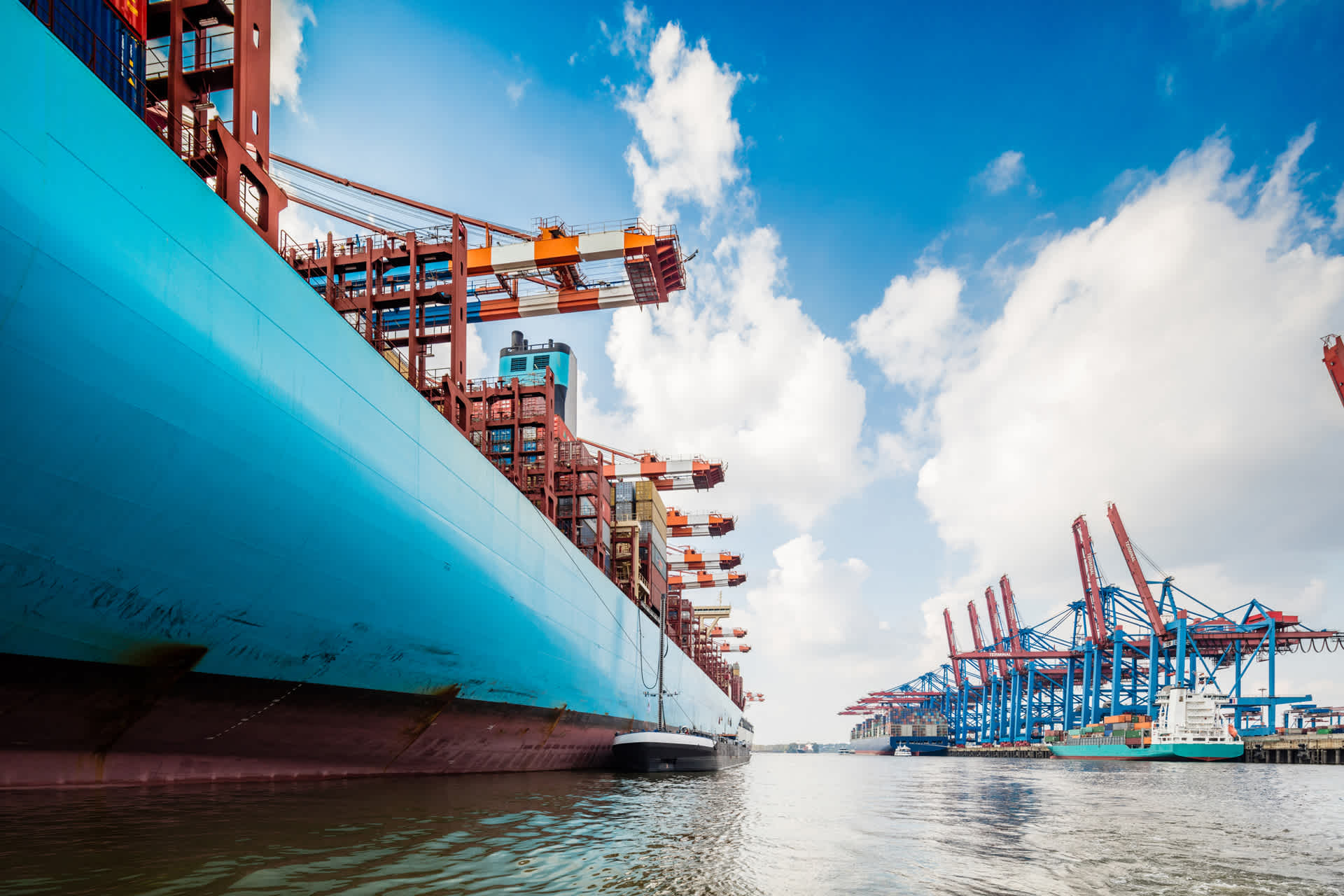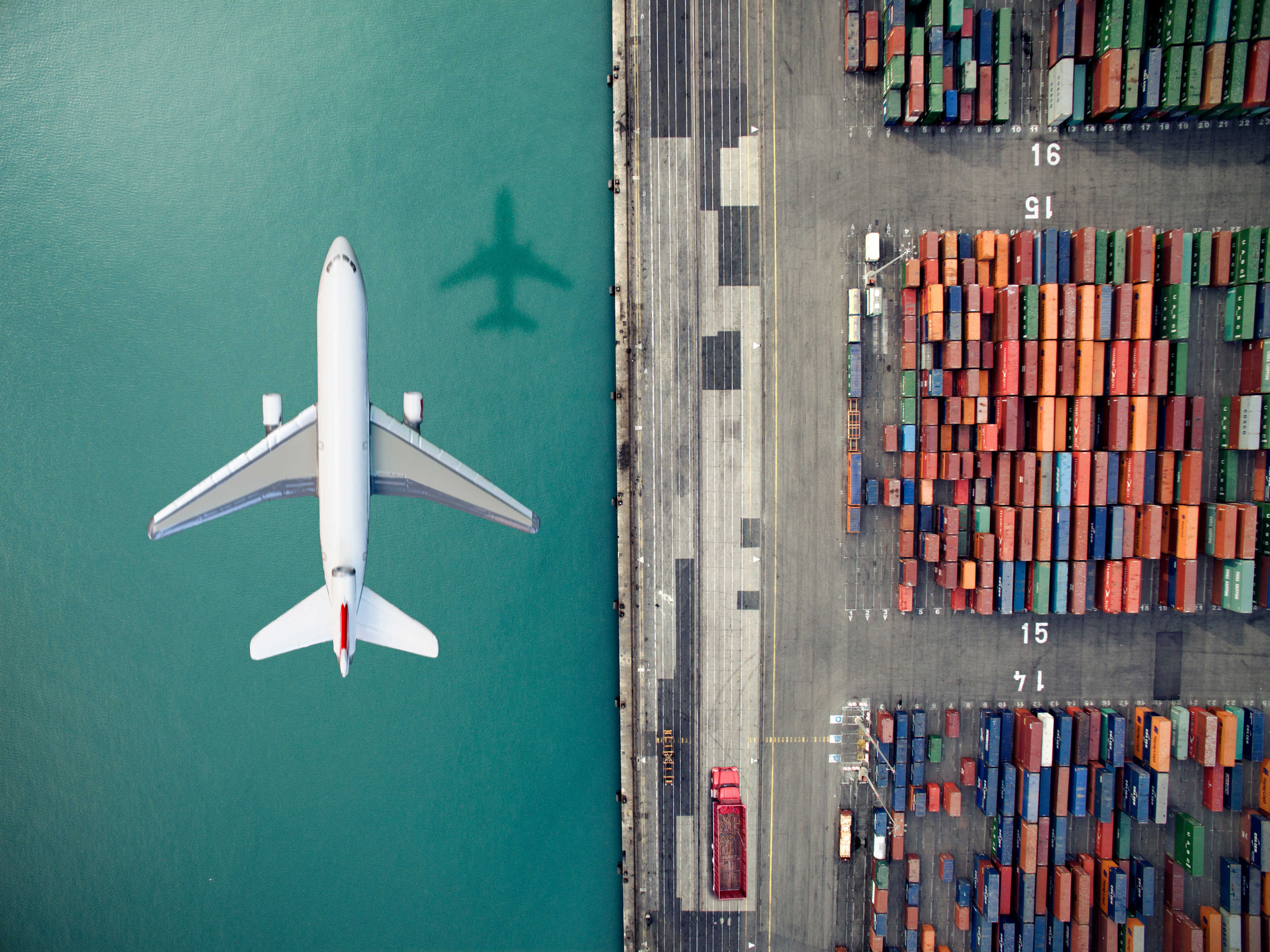Global Logistics Update
Freight Market Update: November 2, 2021
Ocean and air freight rates and trends; customs and trade industry news plus Covid-19 impacts for the week of November 2, 2021.
Freight Market Update: November 2, 2021
Join our next webinars:
North America Freight Market Update Live November 4 at 8:30A PT / 11:30A ET
Spend 30 minutes with Flexport experts as they share frontline trade lane info. We’ll answer questions live.
The State of Trade: A New Approach to China Trade November 10 at 9A PT / 12N ET
A discussion on tariffs, supply chains, and international relations with James Green, former Minister Counselor for Trade Affairs (USTR) at the US Embassy in Beijing.
Ocean Freight Market Update
Asia → North America (TPEB)
- Congestion continues to reduce capacity and cause delays as the number of container ships awaiting berth outside the ports of LA & LB hit records of ~80. The ports’ move to assess a steep congestion fee on containers pending pickup highlights the severity of space issues afflicting the entire supply chain in the weeks prior to North American holidays. The outlook for TPEB rates remains uncertain through the rest of the year as carriers indicate strong demand forecasts through the remainder of 2021.
- Rates Carriers for the most part extended rates for the first half of November. Rate levels remain elevated, and premium demand outlook is strong.
- Space Critical
- Capacity/Equipment Critical/Severe Undercapacity
- Recommendation Continue to book well in advance (at least 4 weeks) from CRD to target ETD for best chance of hitting timelines.
Asia → Europe (FEWB)
- Space and equipment crunches continue as market demand consistently exceeds supply with rates very high for a long period. The overall space situation is worsened by blank sailings and poor equipment availability. Carriers are overcommitted and are limiting booking acceptance or rolling shipments. With continuous vessel delays and shifts, schedule reliability is very low. Power shortages are affecting factory production up to a certain extent and causing more changes in shipping plans.
- Rates Rates remain at a record high level. However, they have been stable throughout October as well as going into November. There are some slight downward rate revisions by a few carriers.
- Space Extremely critical space situation
- Capacity/Equipment Severe equipment shortage across all Asia origins.
- Recommendation Book at least 4 to 5 weeks prior to CRD. Consider premium options, which may be limited. Be flexible in regard to equipment.
Europe → North America (TAWB)
- USWC remains heavily congested with the ports of LA and LB now implementing a ‘dwell fee’ to ease the yard congestion. Congestion at USEC ports is still impacting mainly vessels going to Savannah. Alternative ports have been added to help the situation.
- Rates November rates are set to remain strong for both USEC and USWC. PSS increase announced by some carriers for USWC ports as from 27/11
- Space Critical
- Capacity/Equipment Capacity remains tight for both North Europe and Mediterranean services. Better equipment availability at port; shortages remain at inland depots.
- Recommendation Book 5 or more weeks prior to CRD. Request premium service for higher reliability and no-roll guarantees.
Indian Subcontinent → North America
- The upcoming holiday season in the US and global congestion are causing high demand for all services out of the region. Additionally, the Diwali festival in India will cause further delays as many manufacturers and other stakeholders will be off until November 6.
- Rates remain through first half of November
- Space remains a challenge as global congestion results in omissions and altered sailing schedules. LA/LB and Savannah are being hit the worst with berthing delays’ both are very important gateways for ISC cargo. Upcoming holiday season is adding additional demand to all services out of the region.
- Equipment of all types are in deficit. Carriers are replenishing equipment to main import/export ports on priority.
- Recommendation Use premiums on urgent shipments and shipments with CRD approaching. If routing to USWC, consider rerouting to USEC. Be flexible with inland container depot (ICD) location and equipment type.
North America → Asia
- Vessel arrivals and available capacity remain fluid for USWC POLs. USEC capacity has been more readily available; Deteriorating schedule integrity in addition to creating void sailings and delays is creating significant challenges with posted earliest return dates and vessel cut-offs at the port.
- Rates Multiple GRIs announced by multiple carriers for dry and reefer cargoes throughout November expected to be implemented.
- Equipment Deficits on containers and chassis are still plaguing IPI origins. Availability for standard equipment at ports has not been an issue, but any special equipment is hard to come by.
- Recommendation Please place bookings 4 to 6 weeks in advance to secure your equipment and vessel space.
North America → Europe
- There is available capacity on the TAEB trade with carriers looking for cargo from the US East and Gulf Coasts. US West Coast service to Europe is extremely tight due to void sailings caused by systematic delays. There are 3 TAEB services that will be omitting Savannah and calling Charleston or Jacksonville instead, due to the significant congestion issues at the port.
- Rates to remain steady for November.
- Equipment Deficits are still plaguing IPI origins. Availability for standard equipment at ports has not been an issue, but any special equipment is hard to come by.
- Please place bookings 3 to 4 weeks in advance for East Coast/Gulf sailings and 6 weeks for Pacific Coast sailings.
Air Freight Market Update
Asia
- N.China: CIIE (China International Import Expo) will be held in Shanghai from November 5 to 10, leading some airlines to cancel scheduled freighter and PAX freighter service during this period. This in turn has caused the market rate to increase sharply. Expect extended transit times of 3 to 5 days due to the limited capacity.
- S. China: Capacity remains tight ex-HKG as some PAX flights are still cancelled; however, shippers continue to push out cargo. Rates on both TPEB and FEWB lanes have surged this week. Ex-CAN some airlines have started rejecting large shipments or provided longer transit times of up to 3 weeks. Rates also continue to increase for both TPEB and FEWB lanes.
- Taiwan: The market continues to be very tight and rates are at a record high. Expect at least 7 days of dwell time at origin for standard service and at least 3 days of dwell time for express service. Airlines announced rate increases of 15-25% starting on November 3 for both TPEB and FEWB lanes.
- SE Asia: Rates and space ex-BKK remain similar to the previous week. Most airlines can only accept small shipments. Additional capacity for non-battery cargo to LAX and JFK has helped to slightly improve the market situation. For northern Vietnam, the October volumes from enterprise clients in the market increased by 30% compared to the prior month. The same trend will likely continue in November, however no additional capacity is expected to be added in the market. Space will be extremely tight until the end of the month. Rate levels ex-southern Vietnam have increased week by week and have finally overtaken ex-HAN rate levels. The Covid situation in southern Vietnam has stabilized, but the terminal is facing heavy backlogs due to sudden volume increases and more ad-hoc charter operations.
Europe
- Demand high WoW ex EU. Direct flights this week are still full into the US East Coast, and this is reflected in the rate levels, which have further increased WoW. Earlier advice is still relevant: If you can move through a secondary hub, and the lead time allows, attractive solutions are still in the market. For November, expect demand to be pushed higher as we approach various holidays. Capacity should encourage stability, as vaccinated passengers can fly from the US to the EU. This is promising for cargo capacity.
- Still very heavy strain on AMS and FRA ground handling terminals. No notable improvement at FRA for import cargo. Building in extra lead time into FRA, or using other German hubs is important.
- AMS ground handling terminals are feeling the strain, mainly for export cargo. Handlers are recruiting additional personnel, opening additional warehouses where there is capacity. Additional entries and exits to terminals are being added with the aim to free up space for more trucks to pick/drop cargo.
- No changes on Far East Eastbound this week. Capacity still manageable
- Advice continues for all trade lanes ex EU: Place bookings at least 7 days ahead of CRD for most optimal rates and routing solutions.
Americas
- US export demand is increasing further in November. Larger shipments from major outbound gateways can take 2 to 4 days from booking to uplift into the EU, LATAM, or Asia.
- European Airlines will slowly introduce more bellyhold capacity as US authorities lift the ban on travelers from the EU (effective on Nov 8).
- LAX/ORD/JFK ground handlers continue to face large backlogs and are using off-airport facilities to manage the flood of inbound cargo, which has a trickle-down effect on the export side. Many have shortened their free time for storage, and have implemented new, earlier close outs for exports to accommodate longer throughput times and screening requirements.
- Rates from the US to LATAM and some Asia destinations remain at higher levels. Rates into Europe have not experienced significant changes.
- Fuel surcharges have increased during the last weeks.
- Slightly higher transit times into top European hubs due to their current labor shortage, and high throughput time.
- Recommendation Book early considering the dwell time at airports.
Updates from Flexport's Customs & Compliance Team
US and EU Announce Agreement on Section 232 Tariffs
On October 31, 2021, the US and the EU announced a temporary deal on resolving the current dispute over Transatlantic trade on steel and aluminum. Starting January 1, 2022, the US will impose a quarterly tariff-rate quota on European steel and aluminum that aren’t already excluded from Section 232 tariffs. The EU will suspend retaliatory tariffs and terminate rate increases on US goods starting at the end of 2021. The Section 232 tariffs against the UK and Japan remain in place.
Factory Output News
- Indonesia Indonesia signed a $7.5 billion deal with DP World to form a consortium over the long-term to invest in seaports. Source
- Thailand Approximately 20% of trucks under the Land Transportation Federation of Thailand, which transport consumer goods, imports and exports, and construction materials, will stop running in protest against the high diesel price. Source
- Malaysia Malaysia faces critical manpower shortages in the manufacturing industry due to Covid-19 restrictions and the exodus of migrant workers. Source
- Philippines Philippines, South Korea conclude free trade talks Source with 'big boost' to banana industry and other Agri products. Source
- Sri Lanka Overall Export has declined 0.4% in September, apparel up 5.8% to $457M. Source
Freight Market News
Govt Agencies Look to Relieve Congestion The US Department of Transportation and the California State Transportation Agency have created The Emerging Projects Agreement to help the state fast-track multiple projects according to Supply Chain Dive. To help California grow its economy, protect the environment, and modernize supply chain processes, the program will focus on eight types of projects including port-specific upgrades, highway upgrades, and more.
Read More: Port Workers Portray the Reality of Bottlenecks
US Driver Shortage Adding to Trucking Challenges The Loadstar reports the driver shortage in the US has increased to more than 80K—surpassing a previous estimate of 61.5K. In addition to a lack of available drivers, equipment is also in short supply.
Read More: Tariffs Could Be Part of Why We’re Short on Chassis
Economic highlights from Flexport Chief Economist Dr. Phil Levy
Economic Developments
Slow US GDP Growth for Q3. The advance estimate showed 2.0% growth, down from 6.3% and 6.7% in the two preceding quarters.
More US Inflation Evidence. In its broadest version, the PCE price index, a deflator for personal consumption expenditures, rose at a 4.4% annual rate, the fastest since January 1991. Other flavors of the index showed less inflation – omitting food and energy, 3.6%; trimmed mean 2.3% – but all were above the Federal Reserve’s 2% target.
Separately, the US Department of Labor reported that employment costs rose at the fastest pace on record in Q3.
EU GDP and Inflation Increase. Q3 GDP was up 2.2%, while Euro Zone inflation rose at a 4.1% rate in October, the highest since 2008.
US, EU Reduce Steel Tensions. A new deal fails to remove the “national security” (Sec. 232) tariffs the Trump administration had imposed on steel and aluminum from the EU, but will replace them with tariff-rate quotas (TRQs) that will allow more trade. A TRQ applies a low tariff up to a specified quantity, beyond which a higher tariff applies. The deal will end retaliatory tariffs from the EU.
US Merchandise Trade expanded by 17.6% YOY and by 11.3% compared to 2019. Imports led the way, with industrial supplies (including energy) rising 56.0% while the semiconductor-starved autos industry imports fell by 16.6%. See our recent Trade Activity Forecast for what the future holds.
US-China Talks. The US Secretaries of Treasury and State each held separate talks with their Chinese counterparts this week, both characterized as “candid.” Meanwhile, US exports to China under the Phase 1 trade deal fell by 9% YOY in September.
USMCA Car Troubles. The agreement’s dispute process may soon get another workout. The governments of Canada and Mexico have complained about the Biden administration's rules-of-origin requirements for electric vehicles in the latest version of the infrastructure package.
Freight Market Update is a complimentary service from Flexport, the modern freight forwarder. If you're not already a subscriber, we invite you to subscribe here.
Please note that the information in our publications is compiled from a variety of sources based on the information we have to date. This information is provided to our community for informational purposes only, and we do not accept any liability or responsibility for reliance on the information contained herein.


